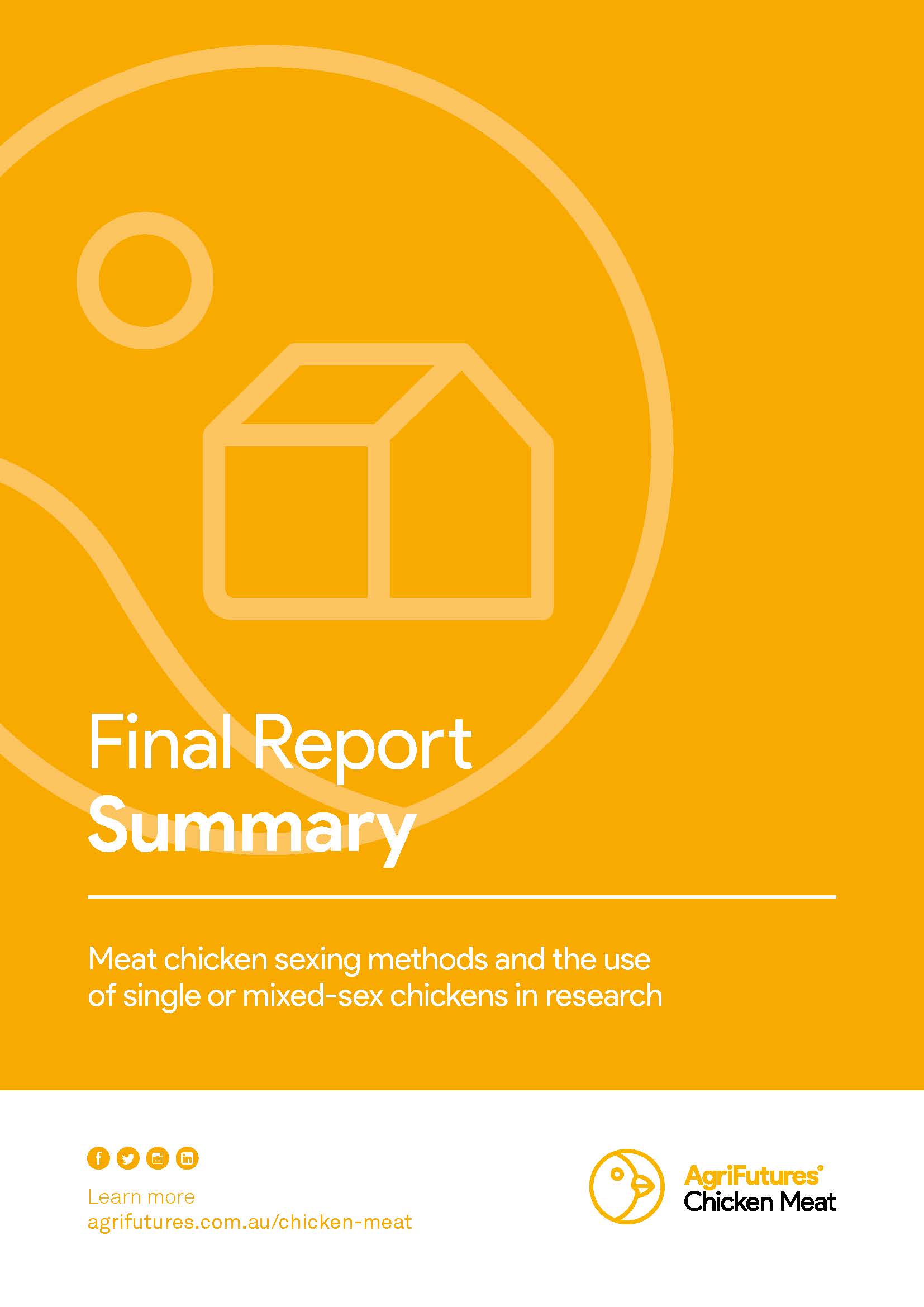It is well known that male and female meat chickens have different growth performance and nutrient needs. These differences make it important in the way research is conducted because the presence of both sexes affects between-pen variation and experimental power. Commonly, researchers use single-sex male meat chickens to reduce the variation in responses to a treatment. However, the ability to source sexed day-old chicks for research has become a challenge because of the change from slow-feathering to fast-feathering parent stock of the current commercial breeds.
This report investigated alternative sexing methods to feather sexing and strategies to minimise limitations caused by the unavailability of male-only meat chickens for research; investigated whether using the same number of male and female chickens per pen has a similar between-pen variation as single-sex chickens, by evaluating the growth performance responses of single or mixed-sex meat chickens to standard and reduced-protein diets; and assessed whether using sex as a covariate in the statistical analysis may help reduce between-pen variation, and thus improve experimental power with randomly mixed-sex chickens.





